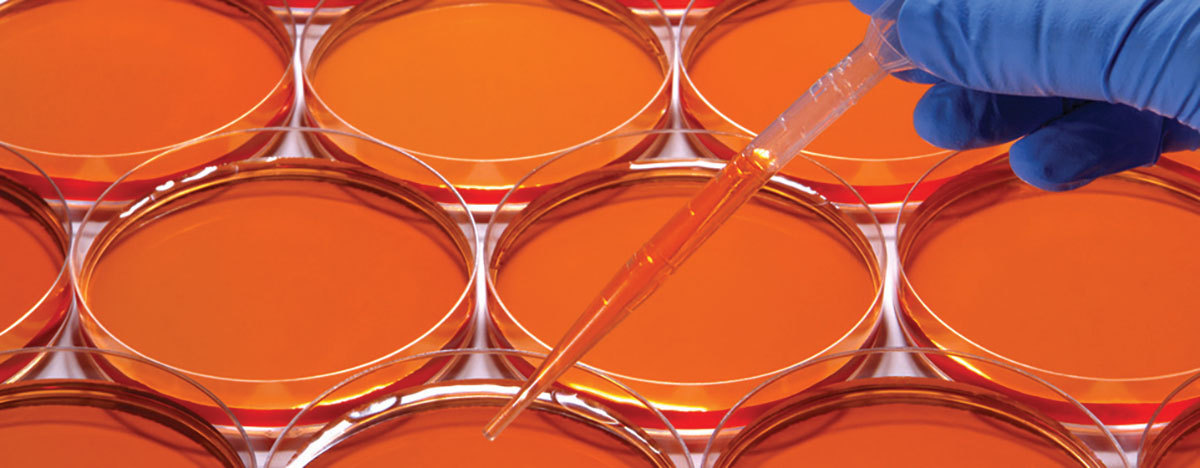Frequently asked questions
If you have any other questions that you can’t find the answer for please contact us and we’ll add the answer to this list.
Nanotechnology has a wide range of definitions and a global agreement has not yet been achieved. But the most widely used definition describes the manipulation of matter on an atomic, molecular or supramolecular scale. A US federal government programme, the National Nanotechnology Initiative (NNI), has stated that:
“Nanotechnology is the understanding and control of matter at dimensions between approximately 1 and 100 nanometres, where unique phenomena enable novel applications…. Encompassing nanoscale science, engineering, and technology, nanotechnology involves imaging, measuring, modelling, and manipulating matter at this length scale.”1
This upper size limit of 100 nm may appear rather arbitrary, but it has its roots within the inorganic study of small particles as it essentially outlines the size range at which there is often a transition between bulk and non-bulk properties2 of metals and metal compounds. New behaviours such as superparamagnetism and surface plasmon resonance (SPR) are observed at very small sizes and these have been the focus of many global research programmes.
- http://www.nano.gov/nanotech-101/nanotechnology-facts.
- Ramsden JJ, Julie F. The Nanoscale. Nanotechnology Perceptions 2009;5:3-25.
The NNI definition of nanomedicine being “the application of nanotechnology to medicine” is the simplest description of this emerging field. The limitation of sizes to the 1-100 nm range, however, is not meaningful as new and highly valuable interactions of materials with complex biological systems have been observed at sizes considerably above the 100 nm upper limit. A broader and more inclusive definition from the European Technology Platform on Nanomedicine (ETPN) describes: “Nanomedicine is the application of nanotechnology to health. It exploits the improved and often novel physical, chemical, and biological properties of materials at the nanometric scale.”1
The benefits provided by nanomedicines are quite specific to the particular nanomedicine, but generally the benefits include enhanced oral bioavailability, reduced side effects and improved targeting.1
- 1R. Duncan; R. Gaspar, Nanomedicine(s) under the Microscope. Molecular Pharmaceutics 2011, 8 (6), 2101-2141
All new medical treatments are evaluated through a process of clinical trials; experiments to evaluate the efficacy of a proposed therapy. Nanomedicines undergo the same rigerous assessment as will all new treatments. In 2006 a committee of the Medicines and Healthcare Products Regulatory Agency (UK),1 the Commission on Human Medicines, reviewed the publicly available data relating to the toxicology of healthcare nanoparticles and concluded that, although there was no evidence for the existence of any new hazard from nanomedicines, new hazards could not be ruled out in future.2 2006 also saw a reflection paper from the European Medicines Agency3 which also did not identify an immediate need for nanotechnology-specific regulation.
2. http://www.mhra.gov.uk/home/groups/dts-bi/documents/websiteresources/con2025205.pdf.
3. http://www.ema.europa.eu/ema/pdfs/human/genetherapy/7976906en.pdf.
This is a tricky questions, nanomaterials have actually been used for applications in medicine for over 130 years; colloidal silver was used for the prevention of eye infections.1 But in modern medicine the first nanomedicine was probably iron dextran, approved in the 1960s.2
- Russell AD, Path FRC, Sl FRP, Hugo WB. Antimicrobial Activity and Action of Silver. PROGRESS IN MEDICINAL CHEMISTRY 311994;31:351.
- Marchasin S, Wallerstein RO. The treatment of iron-deficiency anemia with intravenous iron dextran. Blood 1964;23(3):354-58.
Nanomedicine is a highly multidisciplinary field that includes both therapies and diagnostics, as such it requires people from a vast range of backgrounds including, chemistry, biology and electronics. Therefore, the best path depends on your personal interests in different subject areas. Also, as nanomedicine is currently an emerging field there isn’t current a highly defined career path, as there are many possible routes.
University undergraduate courses that might be worth considering would be, chemistry, (bio)materials science, biology, pharmacology and pharmacy. If universities offer specific nanomedicine modules this might be beneficial but is not essential.
A list of postgraduate degree programs related to Nanomedicine can be found here
